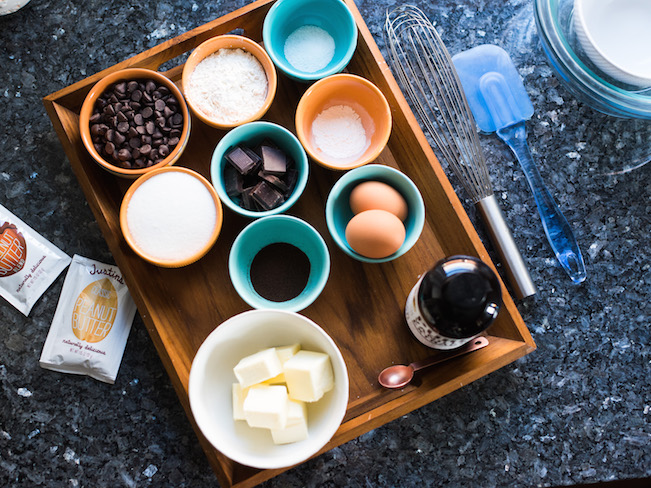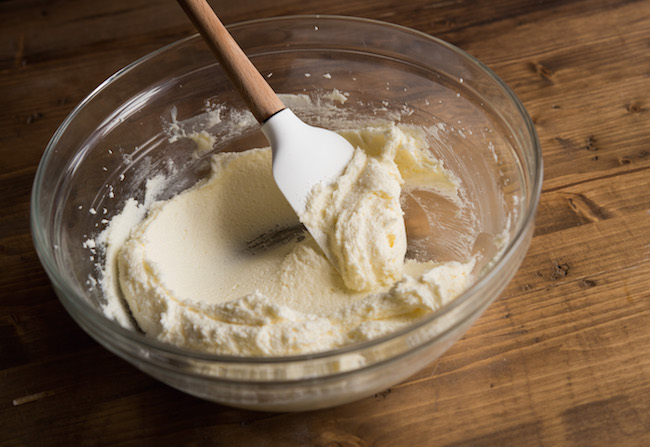If you’re a frequent baker, undoubtedly you’ve noticed temperature indications noted in recipe ingredient lists. But have you ever wondered why you’re being asked to use room temperature eggs, or softened butter?

If you’re curious about why we use room temperature ingredients for baking, you’ve come to the right place.
Do I really need to use room temperature ingredients?
The short answer is yes.
In general, if a recipe calls for room temperature ingredients, there’s typically a good reason. The temperature of the ingredients is important to helping the recipe come out as intended.
How long does it take for ingredients to come to room temperature?
It depends on the heat and humidity in your particular kitchen, but in general, give it about 20-30 minutes for most refrigerated ingredients.
How can you tell when ingredients have reached room temperature?
In the case of butter or cream cheese, it should be soft to the touch but still retain its shape when touched. Milk, yogurt or eggs may feel slightly cool, but not cold to the touch.
Why are they better at room temperature?
Let’s get specific. Here, we’ll break down common ingredients which are requested at room temperature in recipes, and why it matters.
Butter

Many recipes which call for “softened” (or cool room temperature) butter, because softer butter is essential for creaming with other ingredients. Soft butter creams well and is more receptive to adding other ingredients.
For instance, when you add sugar to butter and cream them, the sugar creates air pockets in the butter. If the butter is cold, it won’t be as “receptive” to the sugar, and air pockets will form irregularly. This could mean uneven mixing and uneven baked goods.
Cream cheese
If you’ve ever tried to make frosting or cheesecake using cold cream cheese, you already know why it’s important to let it come to room temperature. Cold cream cheese is particularly resistant to being mixed in with other ingredients, and will remain lumpy. Not the smooth, creamy texture you want in most cream cheese fillings or toppings!
Eggs
 There are two ways that room temperature eggs serve baking recipes.
There are two ways that room temperature eggs serve baking recipes.First, let’s discuss batter or dough.
Cold eggs could re-harden the fat in the mixture, making it appear curdled or lumpy. It can affect the finished texture of baked goods.
Second, let’s talk about beaten eggs.
At room temperature, beaten eggs (whether whole, just yolks or just whites) gain a lot more volume than when cold. This means that your meringues will puff up beautifully and your foamy cakes will attain lofty heights.
Keep ’em cold for separating
It’s worth noting that if your eggs need to be separated, it’s easier to do that when they are still cold. So if you have a recipe that calls for room temperature egg whites, separate the eggs while cold, and let the whites sit for about 15-20 minutes to come to room temperature.
Milk, cream, buttermilk or yogurt
Picture this: You’ve perfectly creamed your butter and sugar, then added room temperature eggs, one at a time, to your dough or batter. Then, you pour in some cold milk (or non-dairy variety), yogurt or buttermilk. It can make the butter seize back up. When the item bakes, the water content of the butter will turn to steam, creating little holes in your baked good. Not ideal!
Should my ingredients always be room temperature?

For many recipes, room temperature ingredients are the best bet. However, this is not true across the board.
Some recipes actually rely on the ingredients being cold or hot to ensure recipe success. A good example is pie dough, which requires ice-cold water and chilled butter to create beautifully flaky layers.
When in doubt, trust your recipe!


My kitchen is cold! how can I get butter to room temperature? using a microwave? or using the oven?